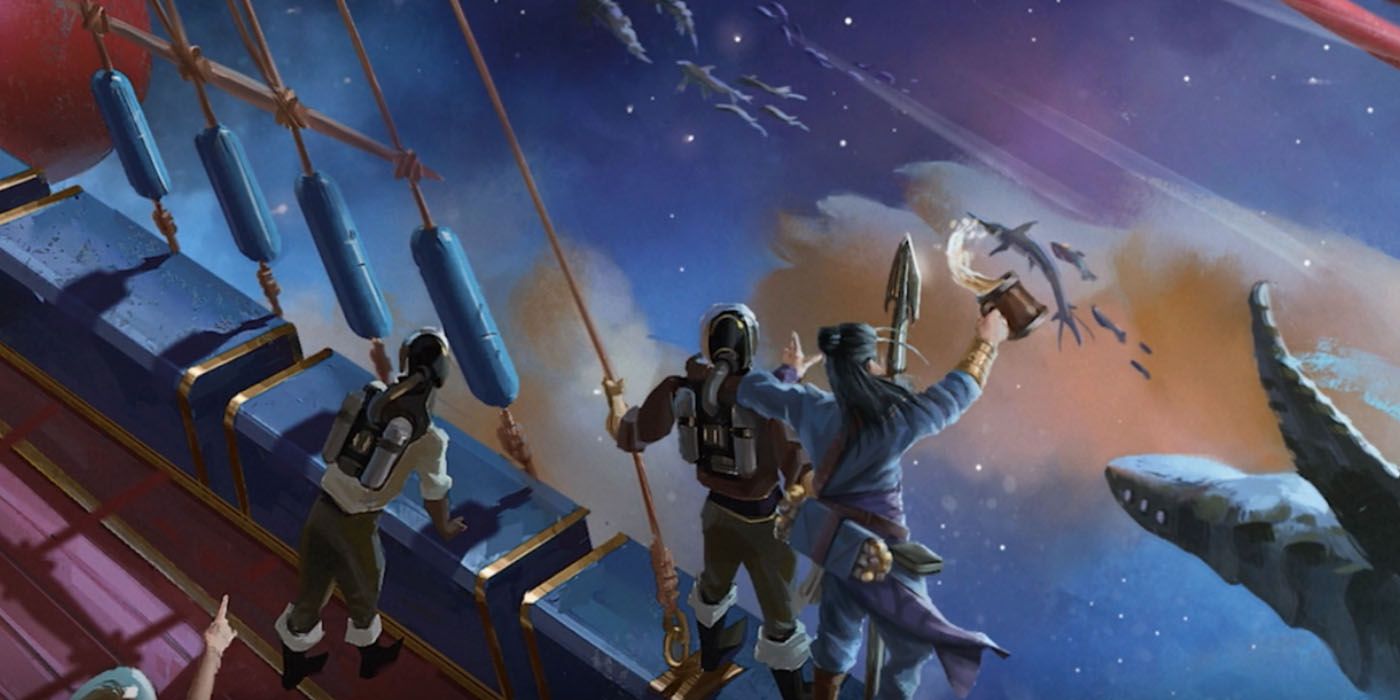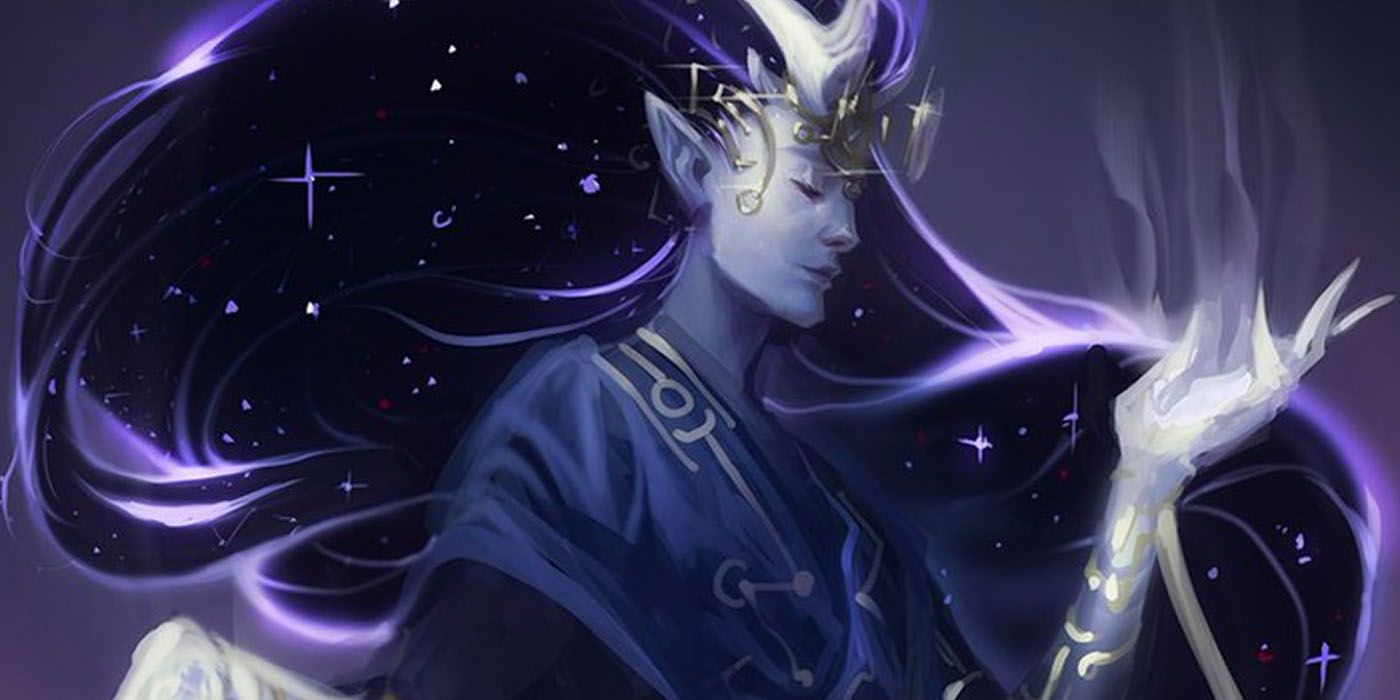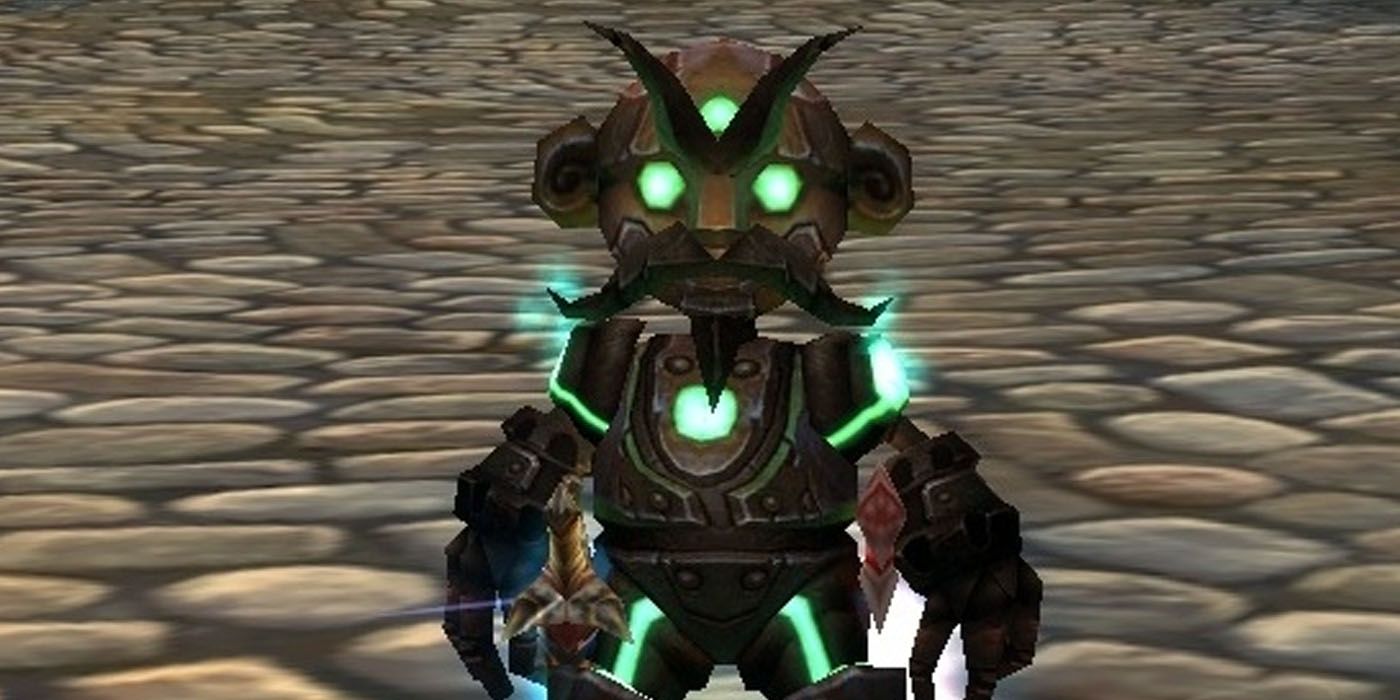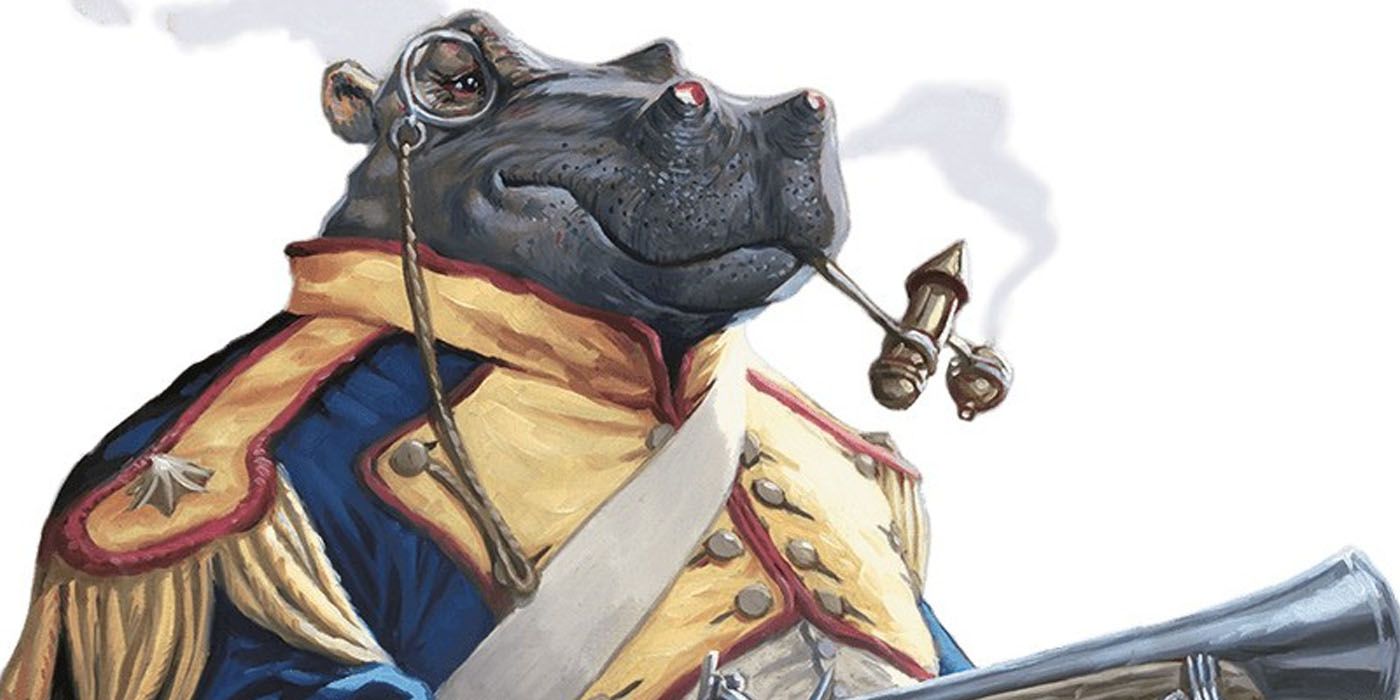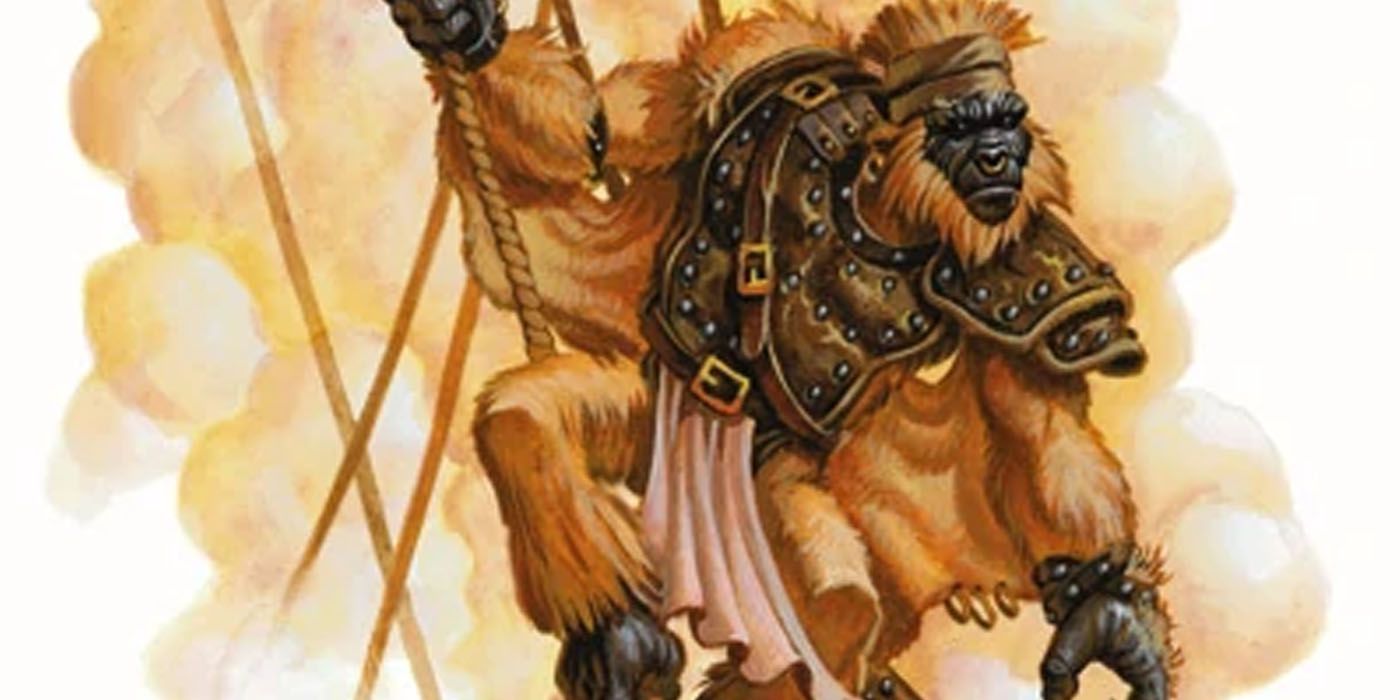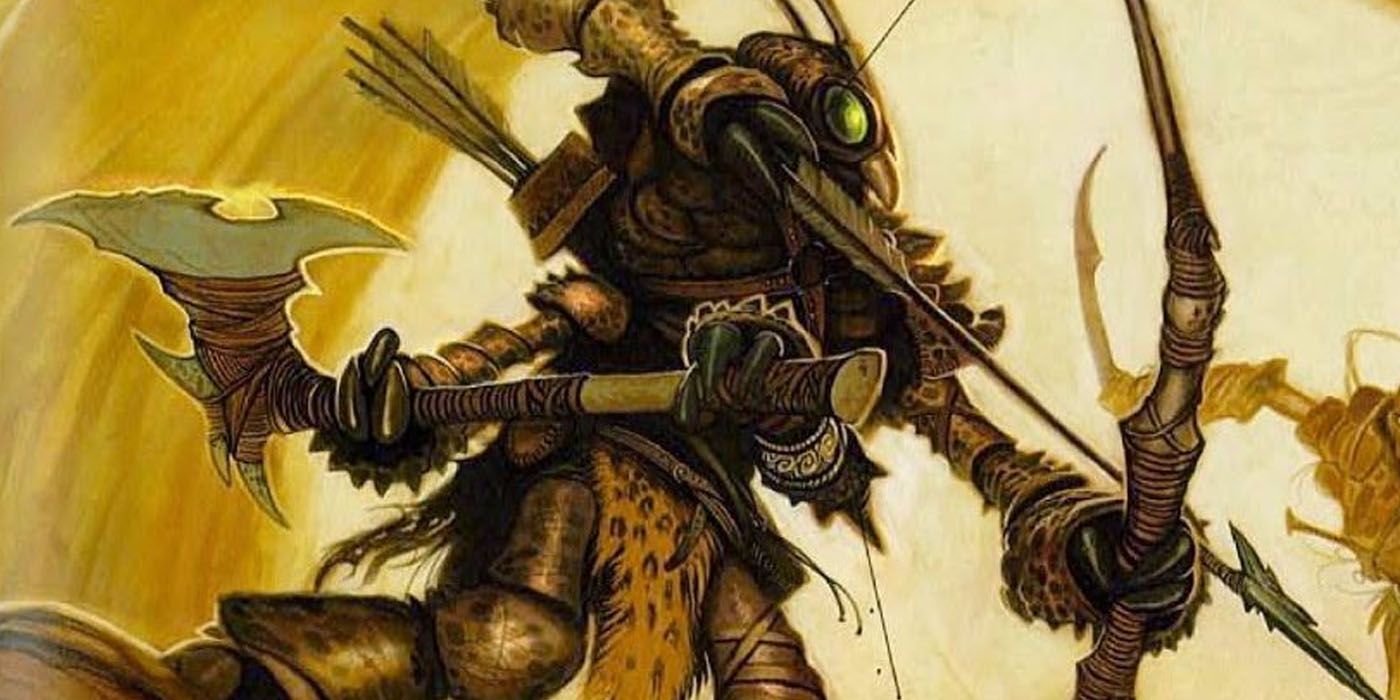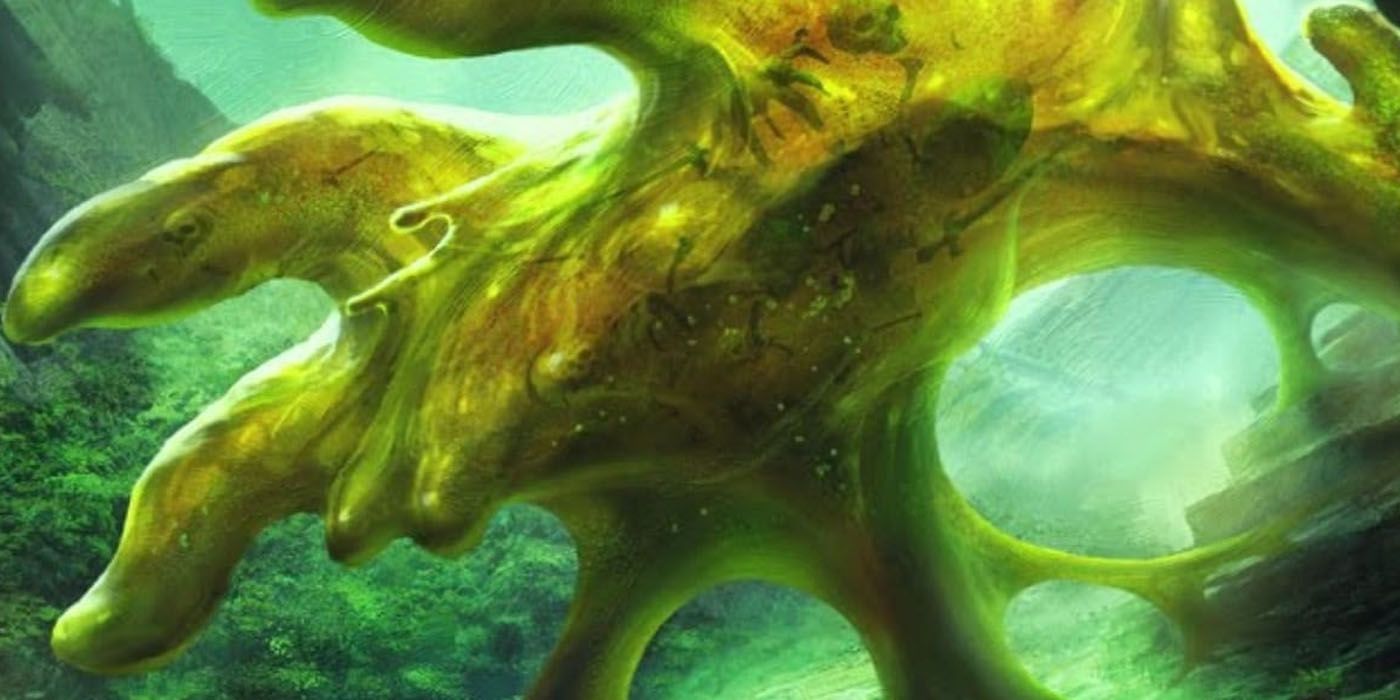One of the exciting things about Dungeons & Dragons releasing Spelljammer: Adventures In Space for Fifth Edition, is that players get even more options to expand their horizons, including during character creation. This blast from the past has been long-anticipated by fans since its last incarnation in Second Edition.
Carrying players into the stars and beyond via magical ships known as Spelljammers, the three-book collection introduced new magic, items, enemies, subclasses, and races. With each new module for 5e, players have been able to experiment with interesting new races and cultures, and Spelljammer added six more species to the mix: thri-kreen, astral elves, autognomes, giffs, hodozee, and plasmoids. These new DnD races are potential adventurers with unique skills and abilities all their own, but what do we know about them?
D&D's Astral Elves Are Spelljammer Immortals
Originally from the Feywild, astral elves chose to live out their incredibly long lives in the Astral Sea, believing this would bring them closer to their gods. Since elves can live to be about 750 years old, they already have an unnaturally long lifespan when compared to other races, but their time in the Astral Sea has made them even practically immortal. Time moves much more slowly in the Astral Sea, which means those who make it their home will barely age at all so long as they stay there and may be thousands of years old.
Astral Elves gain access to one of the following cantrips through the Astral Fire trait: Dancing Lights, Flame, or Sacred Flame. Like other elves, they are resistant to the Charmed condition, have darkvision up to 60 feet, and can't be put to sleep using magic. They rest through four hours of trance, and at the end of their trance period, they can choose proficiency with a weapon or skill that lasts until the end of their next long rest.
Astral Elves also have a unique ability to Starlight Step, which allows them to magically teleport to an unoccupied space they can see within thirty feet using just a bonus action. They can use this feature a number of times equal to their proficiency modifier, and spent uses are regained at the end of a long rest.
Autognomes Were Constructed by DnD 5e's Rock Gnomes
Originally created by rock gnomes, the autognomes are a race of constructs that were built to serve very specific functions. Often resembling their creators in appearance, from time to time, they get separated from their creators and venture out alone to explore. Their mechanical nature provides them with interesting traits, like immunity to disease and resistance to poison damage. Additionally, they have advantage on saves against being paralyzed or poisoned and don't require food, drink, or breath to survive.
Since they are made of metals, they don't need to wear armor, though they can. When not wearing armor, their natural casing provides them with an AC of 13, plus their Dexterity modifier. These constructs were built to succeed, earning a d4 that can be added to attack rolls, saving throws, or ability checks. This feature can be used a number of times equal to their proficiency modifier.
One of the unique differences between Autognomes and other constructs is that they were actually designed to benefit from magics that offer healing. Most constructs aren't affected by spells like Cure Wounds, Healing Word or Spare the Dying, but Autognomes can be healed. In addition, if the Mending spell is cast on them, they can roll a hit die to regain hit points.
Giffs Are the Humanoid Hippopotamuses of D&D
Large and often incredibly loud, it is not uncommon for giffs to be noticed wherever they go. Storytelling tends to be one of their treasured pastimes, which suggests they might make passionate Bards. Their size and physical power, however, give them amazing damage capabilities. For example, if a Giff rolls a one on their damage die after dealing a melee attack, they can reroll the die and use the new roll, but they can only do this once per turn. They also get advantage on ability checks and saving throws involving Strength.
One of the most striking features for Giff ties directly to their purpose for traveling the Astral Sea. It is believed many Giff embark on such journeys in an effort to get closer to their gods, and their travels have developed a psychic connection to the Astral Plane. Using this connection, they gain the Astral Spark perk, which grants a divine spark of force damage to their melee weapon attacks equal to their proficiency bonus.
DnD 5e's Hadozee Are Expert Climbers
These simian humanoids have spent ages adapting to live among the trees. Because of this, Hadozee tend to be very dexterous when it comes to climbing. They also have a trait called Dexterous Feet, which allows them to use a bonus action to use an object with their feet when their hands are full. Additionally, they are excellent gliders when they aren't wearing armor. While using this maneuver, they may glide upward five feet for every one foot they descend while falling and, if they should take damage from a fall, they can use their reaction to take zero damage.
The magic coursing through the veins of Hadozee makes them remarkably resilient. When taking damage, Hadozee can roll a d6 and subtract the number from total damage. They can use this feature a number of times equal to their proficiency bonus.
D&D's Thri-Kreen Are Insectile Humanoids
With the natural armor of their color-changing carapace, the thri-kreen can adapt to blend in more easily to their surroundings. They also have a set of secondary arms, which can be used to wield light weapons only. With darkvision up to 60 feet and no actual sleep requirements, thri-kreen can sit up all night and keep watch while everyone else sleeps. It still counts as a long rest for them, so long as they don't do anything strenuous during that time. Interestingly enough, they also have telepathic abilities that allow them to communicate with a creature up to 120 feet away, even if they don't speak the same language as the creature.
D&D's Plasmoids Are Truly Amorphous
Plasmoids are considered Ooze creatures, and in their natural state, they have no real form. They can shape themselves to look like the surrounding creatures, but cannot actually take on shapes that would convince an onlooker they are anything but what they are. Their nature grants them amorphous abilities, like squeezing through spaces as small as an inch. To achieve this, however, they cannot be wearing any items or armor, otherwise they would get stuck.
Plasmoids can hold their breath for up to an hour and consume their nutrients through osmosis. They also have natural resistance to acid and poison damage, and advantage on throws against being poisoned. While all of that might sound strange, nothing could be stranger than the pseudopod they can extend from their body as a bonus action to perform simple tasks like unlocking doors or picking up an item. However, the pseudopod can't attack or lift anything heavier than 10 pounds.

